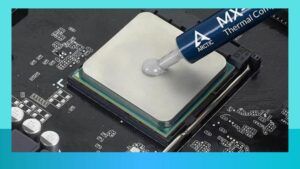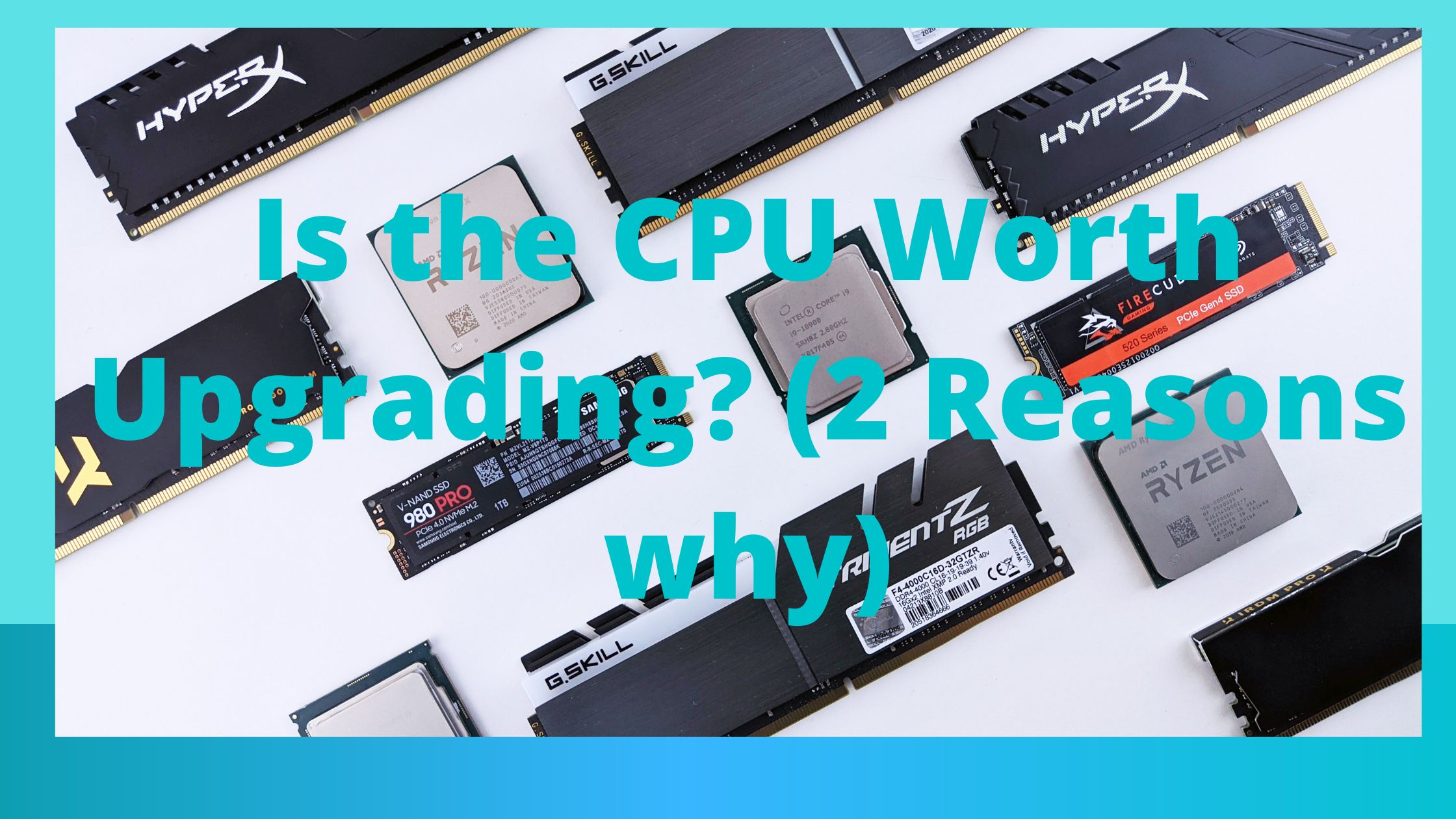If are asking “Is the CPU worth upgrading?” then think again here what you need to know. See, the Over prolonged use, your CPU gradually becomes slow, taking a long time to process tasks. Do we need to upgrade them? This article will partly answer that question.
Is the CPU worth upgrading?
- It depends on your usage needs.Of course, a new CPU always provides stable performance and excellent task processing time.
- It is necessary when using high demanding apps or heavy software
1) It depends on your usage needs.
CPU always provides stable performance and excellent task processing time . Even if you are not, a new CPU of an upgraded also brings great experiences when you do office work or everyday entertainment such as surfing the web or watching youtube.
Moreover, it helps you avoid jerky lag and the discomfort of sitting and looking at the frozen screen or even crashing. I’ll show in this essay the issues surrounding upgrading a CPU.
2) It is necessary when using high demanding apps or Heavy software
If you want to be using your computer for high and heavy demand apps software for your professional work or you want to play games with a high configuration that requires fast processing, or you are an editor with many software that must run simultaneously.
Then upgrading your CPU is highly necessary if you really want to get the best experience.
When Should You Upgrade your CPU?
- When should your CPU be upgraded for gaming?
- When should your CPU be upgraded for content creation?
It’s the old PC gamer’s dilemma: You have one of the best graphics cards on the market, but the rest of your system is showing its age, so should you upgrade your CPU or not?
The response “it depends” may not come as a surprise.
When to upgrade your CPU for gaming?
The subject of CPUs and how they affect game performance is surprisingly intricate.
When there are more cores, faster clock rates, and better memory, we expect more frames and better-looking visuals from GPUs, but CPUs are very different.
It’s pretty uncommon for a significant CPU increase to have little effect on performance under the right circumstances (depending on the game and the settings).
When combined with a sound graphics card, the majority of CPUs produced during the last five years with at least six cores can achieve at least 60 to 120 frames per second in most games, although after that, specific CPUs perform better than others.
Checking GPU utilization with a resource monitor like Task Manager or MSI Afterburner is the best approach to determine whether or not your CPU is limiting your performance in games.
You should observe close to 100% GPU use if your GPU handles most of the computationally intensive tasks in a game.
The lesser the GPU utilization, the less reliant the game is on the GPU, and the more probable it is that your CPU is the one limiting performance.
A CPU upgrade might be beneficial in this situation, which is frequently referred to as a CPU bottleneck.
Having said that, if your GPU utilization isn’t ideal, upgrading might not always be worthwhile.
You will hardly gain any more frames from a higher gaming CPU if your GPU use is near 90%.
If you use closer to 70% or even lower, you’re leaving quite a bit of performance on the table if you think the frame rate you’re getting is too low.
You may be able to maximize the power of your GPU by upgrading your CPU to help it get over any constraints on its end.
When to upgrade your CPU for content creation?
The term “content creation” covers a wide range of software applications. Still, the great majority of them may be divided into two groups: those that benefit from several fast cores and those that benefit from a single tight heart.
It’s relatively simple to determine whether a CPU increase would be beneficial, unlike video games.
Most apps for creating content, particularly those for editing and generating video, profit from having several cores.
It’s not difficult to determine whether a specific application might benefit from having more seats. Open a resource monitor such as Task Manager or MSI Afterburner to view your CPU utilization while working on a task.
You will probably benefit from having a CPU with additional cores if CPU use is nearly 100%. Before purchasing a 32-core CPU for software that only uses 16, you should examine the maximum number of seats that most apps can use.
The best CPUs for applications that use just one or two cores are those with excellent single-threaded performance.
However, most single-threaded or single-core apps are straightforward and run well on almost any current CPU.
If, for example, you frequently work on a reasonably large spreadsheet in Excel, which may be a taxing job for some CPUs, you could consider upgrading for improved single-threaded performance.
If you’re creating content, you should also consider whether you need a faster CPU. Other factors might, at times, be more crucial.
For instance, even if you can use a CPU to broadcast on OBS, it may be preferable to utilize a recent GPU and an updated encoder because CPU encoding is quite time-consuming and may even result in lower quality depending on the CPU.
Other elements may potentially be causing a bottleneck for you. Again, open a resource monitor while your PC is running and see what is at 100% to identify your bottlenecks. There are situations when having insufficient RAM is indicated by high RAM utilization.
High disk use is typically also a lousy indicator and might mean that you could use a faster drive.
How to upgrade a CPU?
- Make sure your CPU and motherboard are compatible.
- Back up your data if you want to.
- Open up your computer.
- Remove the fan or heatsink.
- Remove the previous thermal paste
- Get rid of the old CPU.
- Secure the new processor.
- Apply the thermal paste.
Make sure your CPU and motherboard are compatible.
Finding out that your computer cannot handle your new processor will put an immediate end to any CPU upgrading. Good news! There are a number a ton of internet tools you can use to conduct your study.
The bad news is that this necessitates extensive upfront study to establish what will and won’t work.
In my quest, the website CPU-Upgrade has shown to be the most helpful resource. You may use this tool to search your motherboard and then see which AMD and Intel processors it supports.
Although the website isn’t entirely comprehensive for example, Lenovo/Skybay motherboards aren’t listed it’s a great location to start your search.
And indeed, it will appear a little intimidating due to the over 1,000 factors that affect motherboard/CPU compatibility.
My most significant recommendation is just to get started and use broad strokes. Your CPU and motherboard must be compatible. Good! Therefore, you don’t need to stress about the specifics.
For the record, put “msinfo32” into the Windows search box to find out what motherboard you have.
By doing so, the System Information window will appear, allowing you to see the BaseBoard Product and BaseBoard Manufacturer (such as ASUS) (e.g., P7P55 WS SUPERCOMPUTER).
Back up your data if you want to.
Although I’ll confess that I’m a little superstitious about it, my attitude is that before replacing a computer part, you should back up any data that you can’t stand to lose.
Theoretically, replacing your CPU shouldn’t impact your hard drive, even if you completely screw up the procedure. (Don’t lose heart; it’s challenging.)
But every time you open a computer case, various variables come into play. If one of these happens to you, or if a well-intentioned pet accidentally knocks the entire system down a flight of stairs, you’ll be pleased you backed up your information.
Open up your computer.
Before performing any operation inside your PC, you must first turn it on. After opening your computer, it never hurts to use a can of compressed air to blow the dust away.
Remove the fan or heatsink.
The component of your computer that connects to your CPU and fan is called the heatsink. An easy fan might be used in its place.
The heatsink’s job is to gather and expel heat produced by the CPU. Cool air is supplied inside your computer via the fan. As a result, you must remove one of them before you can access the CPU.
Depending on the type of heatsink or fan you have, you’ll have to perform this work in a certain way, but you’ll usually need to remove the screws holding it in place first.
Be sensible here: Remove any screws that need to be removed, but don’t pull too hard if nothing comes loose.

Remove the previous thermal paste.
Technically, nothing terrible would happen if you used the thermal paste on your heatsink or fan.
It’s best to throw away the old material and start over since you’ll be applying a new coat.
(You don’t want to pile thermal paste on top of thermal paste; doing so would decrease its conductivity and lessen the effectiveness of the heatsink.) Fortunately, it’s pretty simple to remove the old thermal paste.
Just use a paper towel and some rubbing alcohol. Make sure there are no stray paper towel pieces in your computer, but it won’t hurt if you spill a few drops of alcohol anywhere else in it.
Get rid of the old CPU.
The old processor is housed behind the heatsink or fan. To remove the housing, there should be a little metal lever someplace.
A word of caution: You might need to press the lever to the side and downward first carefully.
If you find yourself tugging forcefully on a component throughout this procedure, you’re overlooking a very simple, delicate technique to remove it.
The CPU may simply be lifted out after raising the casing. Nothing else is holding it in place.
Secure the new processor.
Place your new processor carefully where your old one was, which is the easiest step of the entire procedure.
Verify that the two tiny indentations on the side of the processor line up with the corresponding indentations on the housing.
When the CPU is flat and inserted properly, you will know. Lower the housing after that and re-secure it with the metal bar.
Apply the thermal paste.
You’ll find a number of different suggestions for the “best” method to apply thermal paste if you search online.
There are several techniques, and there is some evidence in support of (and against) each one. Examples include drawing an X, forming a cross, spreading it beforehand, and letting gravity do the work.
The short answer is that the machine’s performance is not going to be affected by how thermal paste is applied unless you’re creating some sort of supercharged, overclocked powerhouse.
Personally, I used the “grain of rice” technique and formed a little ball in the exact middle of the processor. Spreading it over time should be handled by the heatsink and the processor’s internal heat.
What is a CPU, and what does it do?
Central Processing Unit, abbreviated as CPU. Other names for it are processor and microprocessor.
It’s one of, if not the most significant piece of hardware in every digital computer system.
In a nutshell, a CPU is responsible for handling the processing of logical and mathematical operations and executing instructions that it is given.
It can run millions of instructions per second–but can carry out only one instruction simultaneously.
The CPU then handles the following four tasks:
- Fetching instructions from memory: The system brings instructions from memory to understand how to handle the input and know the relevant instructions for that specific input data. It directs the request to the RAM after looking for the location of the appropriate education. The CPU and RAM collaborate continually. It’s sometimes referred to as reading from memory.
- Making the instructions understandable for the CPU by decoding or translating them into machine language (binary).
- Putting into practice and following the instructions.
- The execution’s outcome is saved in memory for possible later retrieval. Another name for this is writing to memory.
Final though
I just answered your question; it is worth upgrading the CPU?.
- It depends on your usage needs.
- It is necessary when using high demanding apps or Heavy software
Hopefully, with this article, you will have more knowledge and make the right decision with your PC.
Related Article:
How Do I Clear My CPU RAM To Boost Performance?(Easy Guide Explained)

